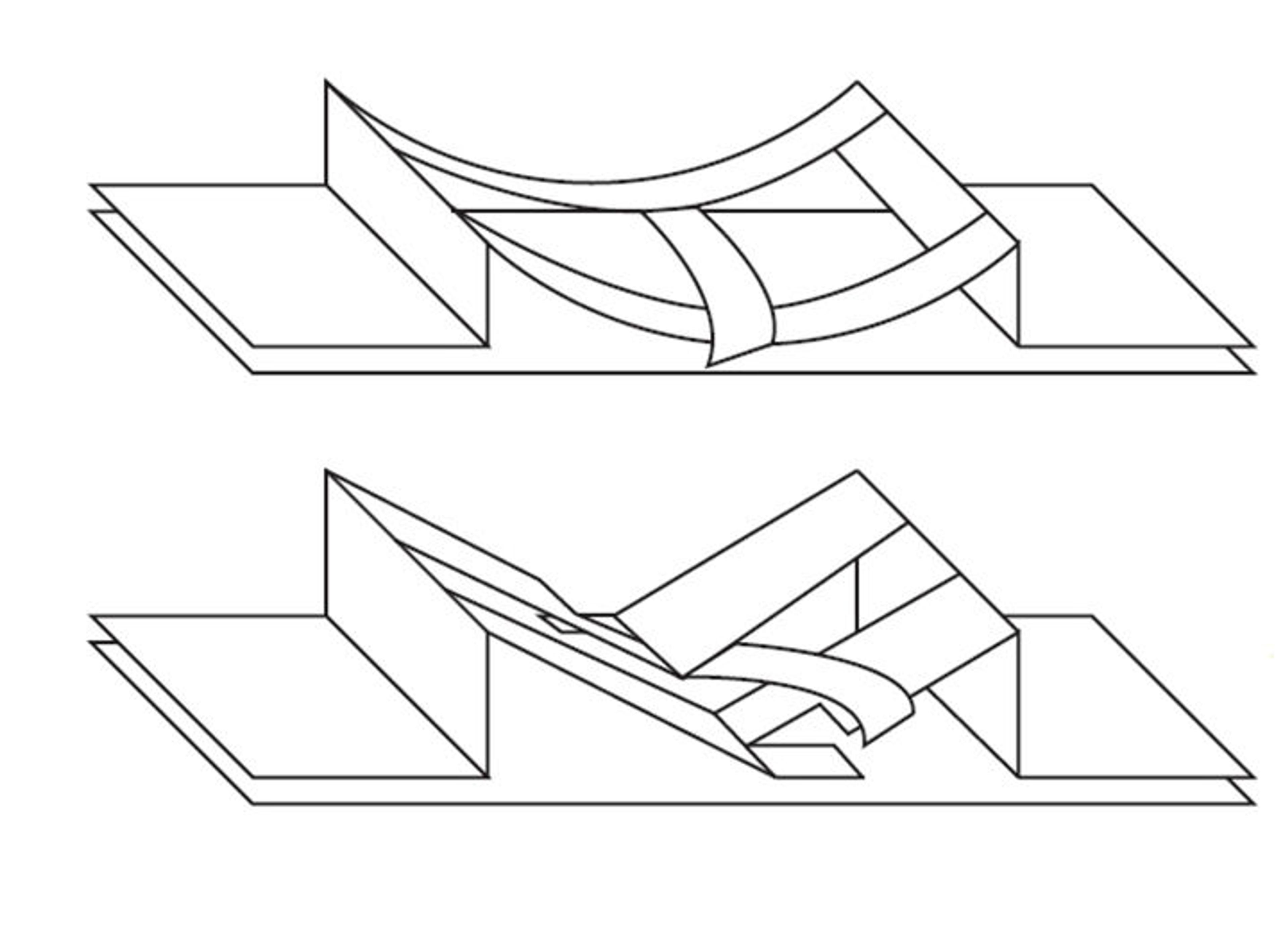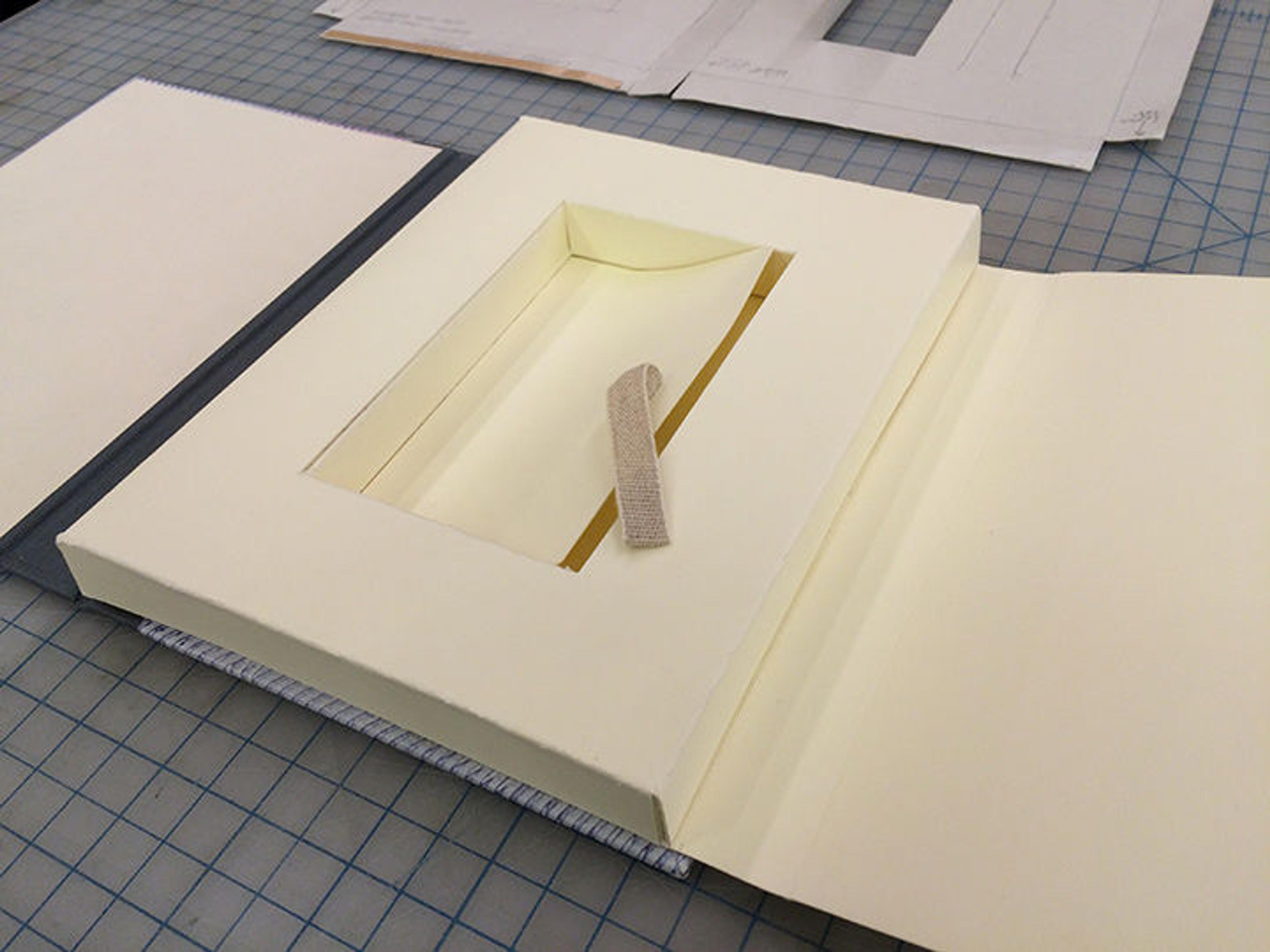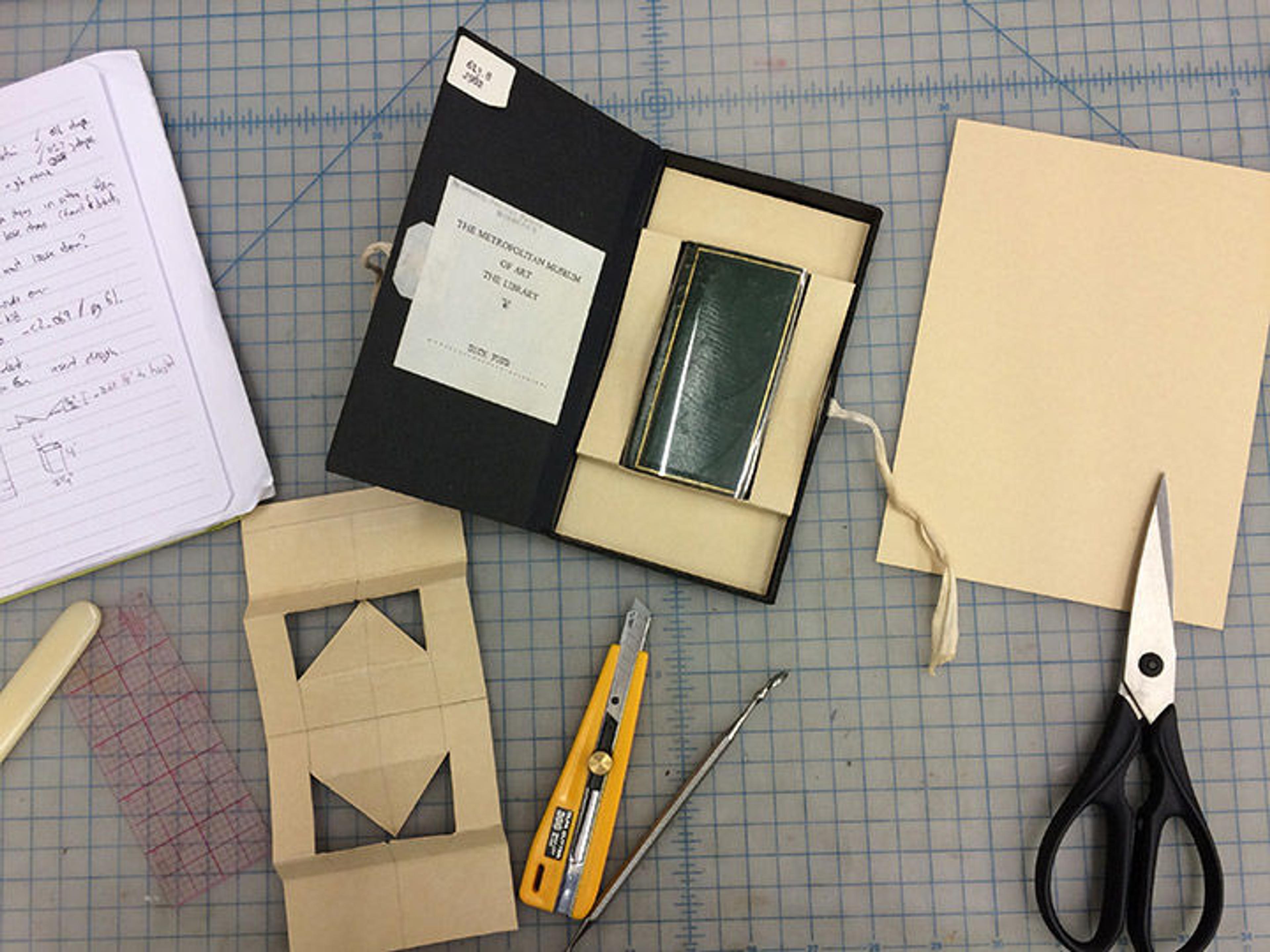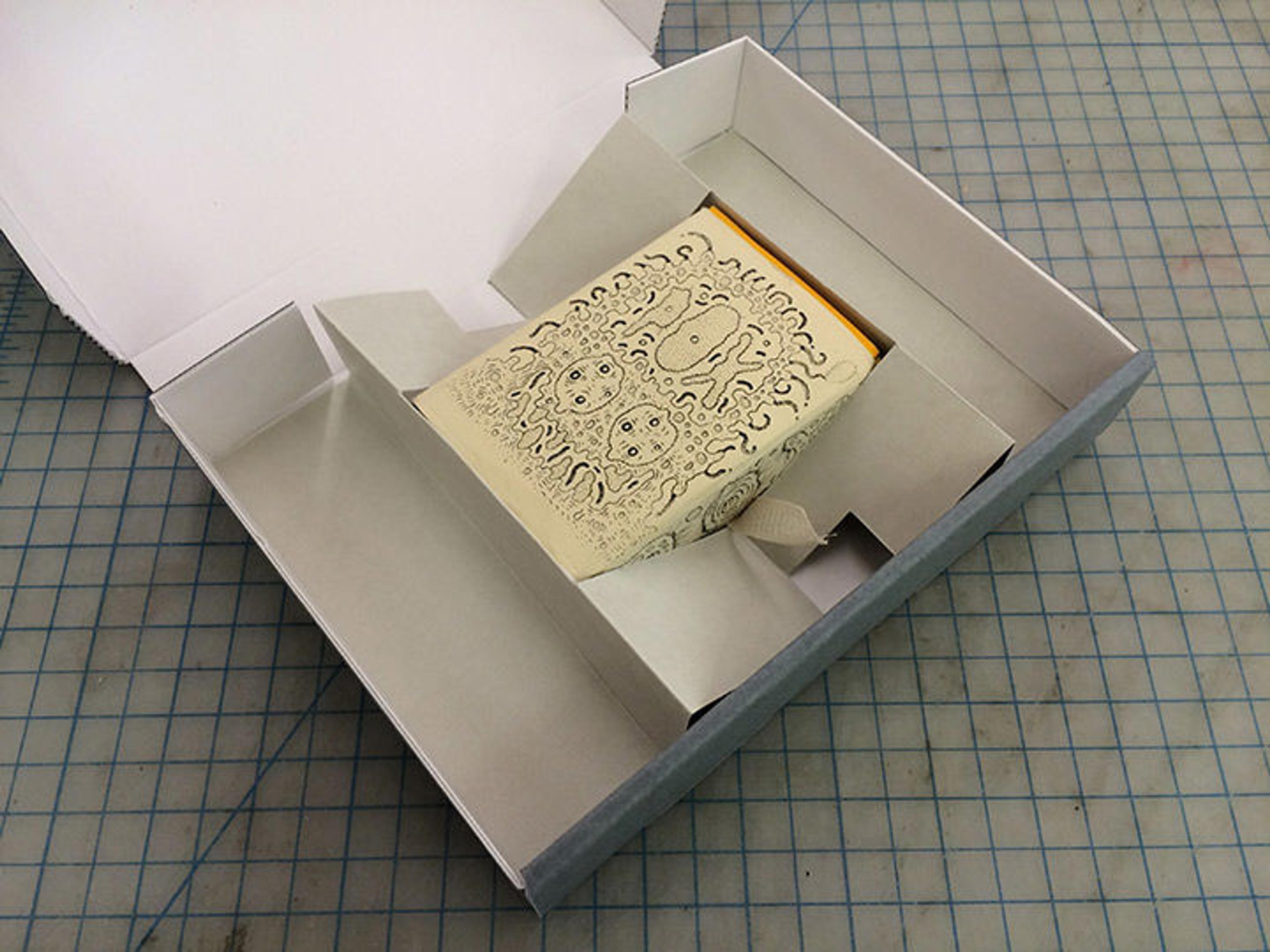
Side view diagrams of the Kyle Inserts
«A large portion of my time as an intern (through a fellowship offered by Pratt Institute) was dedicated to working on various projects in the Sherman Fairchild Center for Book Conservation within Watson Library. Over the past year I had the pleasure of learning many new skills from this wonderful and knowledgeable team of book conservators. Imagine my delight when our roles were flipped and I was able to teach them a thing or two.»
Book Conservation had a problem: there was no good solution for storing the many miniature books acquired by the library. If the books were covered only in Mylar wrappers, they risked being pushed back and lost in the crowded shelves. When placed in an archival storage box or four-flap enclosure, they would bang around and sustain dinged corners in the spacious interior. To remedy this situation, Book Conservation staff developed a lovely small book insert template, but it was both time- and labor-intensive. It took about an hour to cut, fold, and assemble the insert. Preservation Librarian Mindell Dubansky and Jenny Davis, associate manager of Book Conservation, suggested that I investigate alternative constructions for their small book inserts. With years of experience designing pop-up books and movable cards, I felt my paper engineering expertise would be of great use in tackling this task.

The library's original design for a small book insert
After studying the original template for the small book insert, I spent a few hours sketching out some ideas and playing with various heavy cardstock and corrugated cardboard sheets before I came across a simple but sturdy design. Using a single sheet of medium map folder board, I was able to nest a small book within two protruding shelves. A low-slung cradle supported the sides of the object while also providing an access point for easy removal of the book.

An early prototype of the Kyle Insert version 1. Download the current Kyle Insert version 1 templates and instructions (PDF).
After feedback from Book Conservation staff, I revised this design to include an attached strip of linen tape to lift the book out of the bowed cradle. We joked that this design should be called the Kyle Insert so that my moniker would live on in the hallways of the Watson Library (and possibly beyond), and so the name stuck.
After testing a few more of the Kyle Inserts on miniature books of various sizes, it was determined that if the book had a spine greater than one inch and an overall height less than four times the spine measurement, then there would not be enough flex in the curved sides of the cradle. So, I created a second version of the inserts in which I added a central crease and carved out some glue tabs to anchor the more angular insert to the container. This new version required a revised set of templates and instructions and relied heavily on solving the unknown measurements using the Pythagorean theorem. (Yet another example of why you need to pay attention in your grade school math class. You will use this in real life! If you need to brush up on your geometry, I recommend you check out the visually striking facsimile of Oliver Byrne's The First Six Books of the Elements of Euclid.) Even with the number crunching, I was able to assemble the two versions of the Kyle Insert in about 20 minutes, achieving a 60% savings in construction time and a similar 60% savings in material usage.

The Kyle Insert version 2 supporting a set of artists' books. Download the current Kyle Insert version 2 templates and instructions (PDF).
The two versions of the Kyle Insert have now been tested on almost a dozen miniature books of all shapes and sizes with great success—and time will tell if my designs will meet the future needs of Book Conservation. Hopefully in the future I will be able to confidently pursue submitting the templates to someplace like Talas, a Brooklyn-based artist and archival material vendor, or a publication like the Guild of Book Workers Journal, so that other individuals and institutions can benefit from this time saving enclosure insert. In the meantime, I can rest easy knowing that a small part of me will remain at the Watson Library long after my fellowship ends.